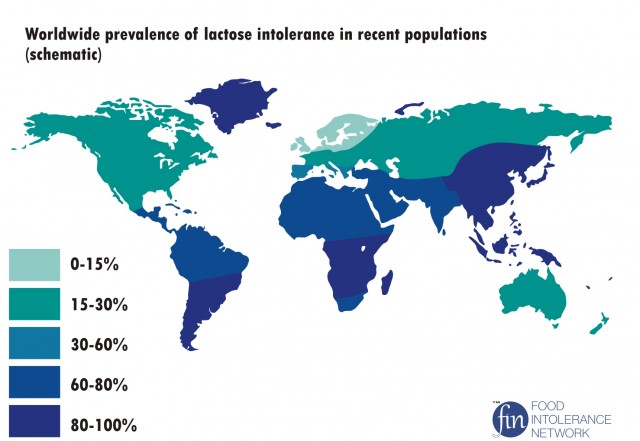Lactose Intolerance
 What is lactose intolerance and how can biology help those who are lactose intolerant? Students investigate the commercial uses of enzymes and in particular how the use of lactase in food production can help people who are lactose intolerant. A compilation of video clips explains the main issues and a data analysis activity coupled with some research complements the video introduction.
What is lactose intolerance and how can biology help those who are lactose intolerant? Students investigate the commercial uses of enzymes and in particular how the use of lactase in food production can help people who are lactose intolerant. A compilation of video clips explains the main issues and a data analysis activity coupled with some research complements the video introduction.
Lesson Description
Guiding Question
Milk contains the sugar lactose. Which enzyme will be needed to digest this milk?
What would happen to the population of intestine bacteria if the lactose could not be digested but remained in the intestines?
Activity 1 - What is Lactose intolerance?
Watch this short compilation of videos to learn a little about lactose intolerance and how enzymes can help.
|
|
|
Review questions - to think about while watching the videos.
- What are the two monosaccharide sugars in lactose?
- What is the name of the enzyme which can break them down?
- Where is this enzyme normally found in the body?
- What is an immobilized enzyme?
- How can immobilized enzymes be used to produce lactose free milk?
- How can we produce Rhino milk (which is lactose free) without using immobilized enzymes?
- What genetic cause has given many humans the ability to digest lactose when adult?
- What is lactose intolerance?
- What are the symptoms of lactose intolerance?
Review questions model answers
- What are the two monosaccharide sugars in lactose?
Glucose and galactose - What is the name of the enzyme which can break them down?
Lactose - Where is this enzyme normally found in the body?
In the small intestines - What is an immobilized enzyme?
An enzymes trapped in a bead (an alginate bead) which can be easily separated from the milk. - How can immobilized enzymes be used to produce lactose free milk?
Milk can be passed through a column of beads containing the immobilized lactose enzyme. - How can we produce Rhino milk (which is lactose free) without using immobilized enzymes?
Adding enzymes to milk will break down the lactose, but the enzymes cannot be recovered from the milk for reuse. - What genetic cause has given many humans the ability to digest lactose when adult?
A mutation in a non-(protein) coding gene - thought to control the expression of the lactose gene - What is lactose intolerance?
lf a person doesn't produce enough of the lactose enzyme, they can't digest lactose, which passes into the large intestines and gets broken down by bacteria, producing gas and causing diarrhoea. - What are the symptoms of lactose intolerance?
Symptoms include intestinal cramps, bloating, diarrhoea
Activity 2: Activity on the biochemistry of Lactose Intolerance
Complete the activities on the ![]() Lactose intolerance worksheet below to explore the consequences of lactose intolerance.
Lactose intolerance worksheet below to explore the consequences of lactose intolerance.
Teachers notes
This is a simple activity where students first watch a few short video clips and then using a worksheet consider what it is like to be lactose intolerant, answering questions about the structure of lactose and the use of immobilised enzymes to make lactose free products.
There is a really nice explanation of lactose and the gene mutation in human history from
The Evolution of Lactose Tolerance — HHMI BioInteractive Video
It includes this map or the global distribution of lactose tolerance (lactase persistence) which is a nice opportunity to explore international perspectives (International mindedness)

 IB Docs (2) Team
IB Docs (2) Team

